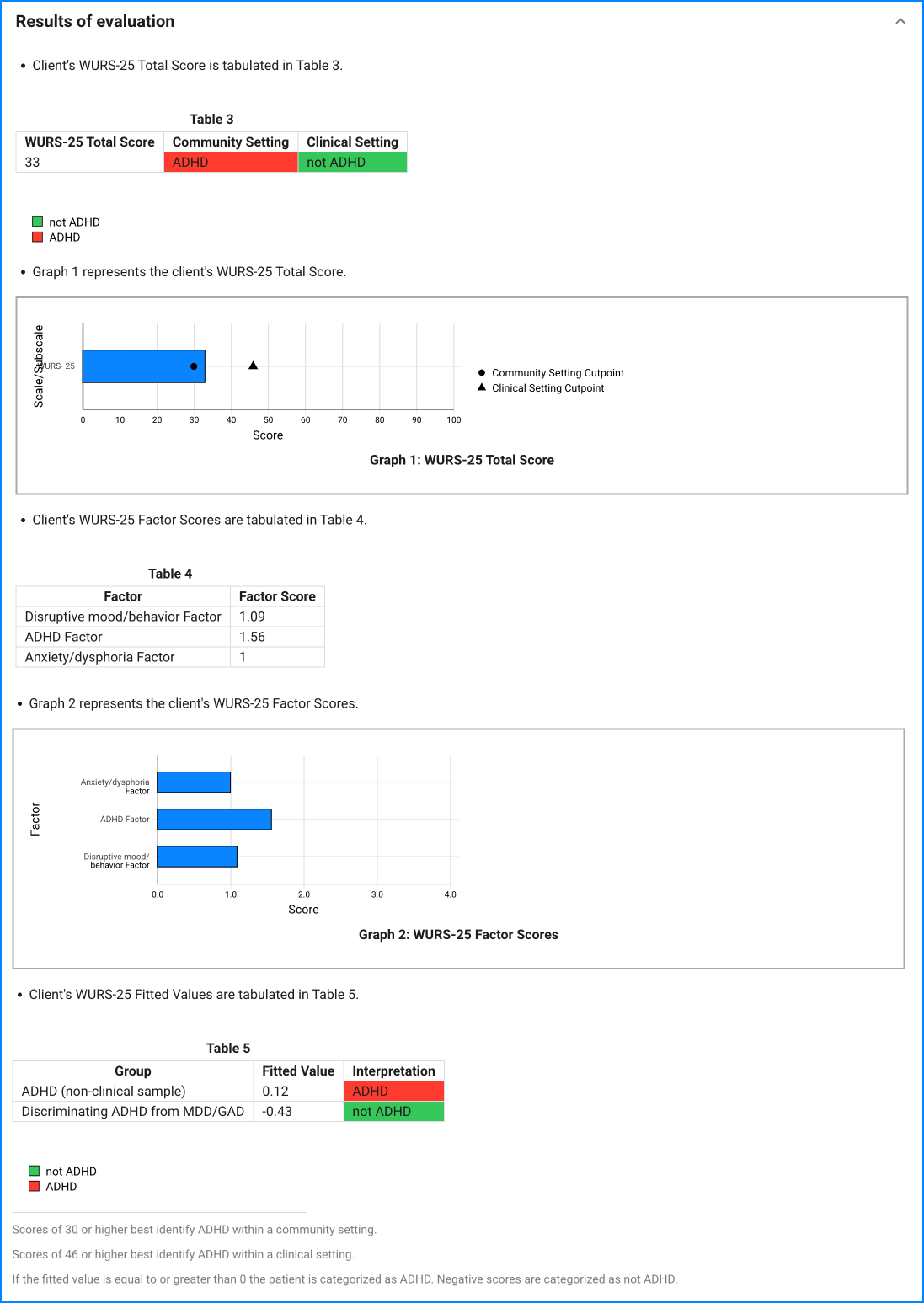Since the questionnaire relies on client self-report, all responses should be verified by the clinician, and a definitive diagnosis is made on clinical grounds taking into account how well the client understood the questionnaire, as well as other relevant information from the client.
A WURS score by itself should not be used to diagnose ADHD.
Psychologists administer the WURS as one component of a comprehensive, multi-method assessment.
The 3 factors of the WURS-25 reflect the following problems:
If you ask people to complete the WURS-25 form, which includes only 25 items, most people realize that they are taking an ""ADHD test"" the questionnaire's purpose is transparent. This leads some people to endorse more items at higher severity levels because (for a variety of reasons) they want an ADHD diagnosis.
Why are Fitted Values Important?
Calculating fitted values can help differentiate between ADHD-like symptoms caused by depressive and anxiety disorders vs. ADHD-driven symptomatology.
As you probably know, substantial overlap exists between symptoms for ADHD, depression, anxiety, and other disorders, e.g., difficulty concentrating.
In other words, a patient with major depression and generalized anxiety may look like they have ADHD.
The three disorders can coexist but the prevalence of ADHD + MDD + GAD is much lower than MDD + GAD.
Of course, one should not diagnose based on fitted values alone.



